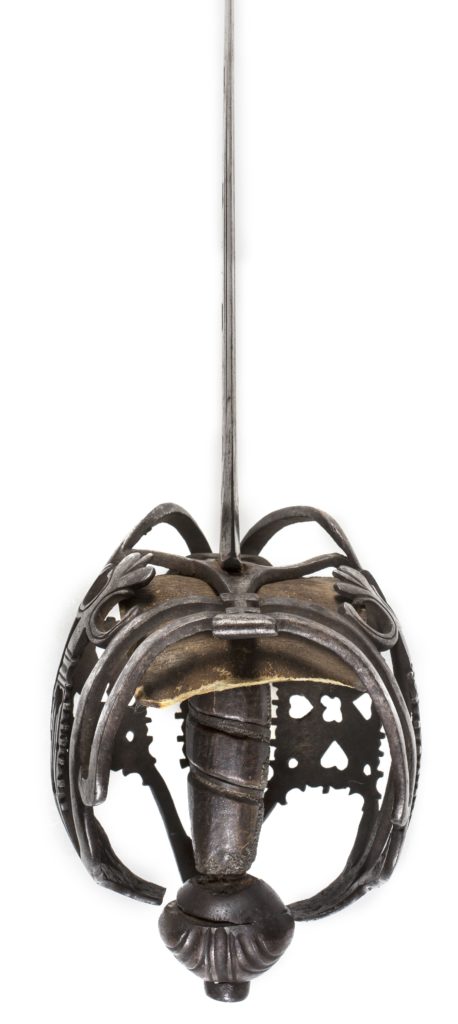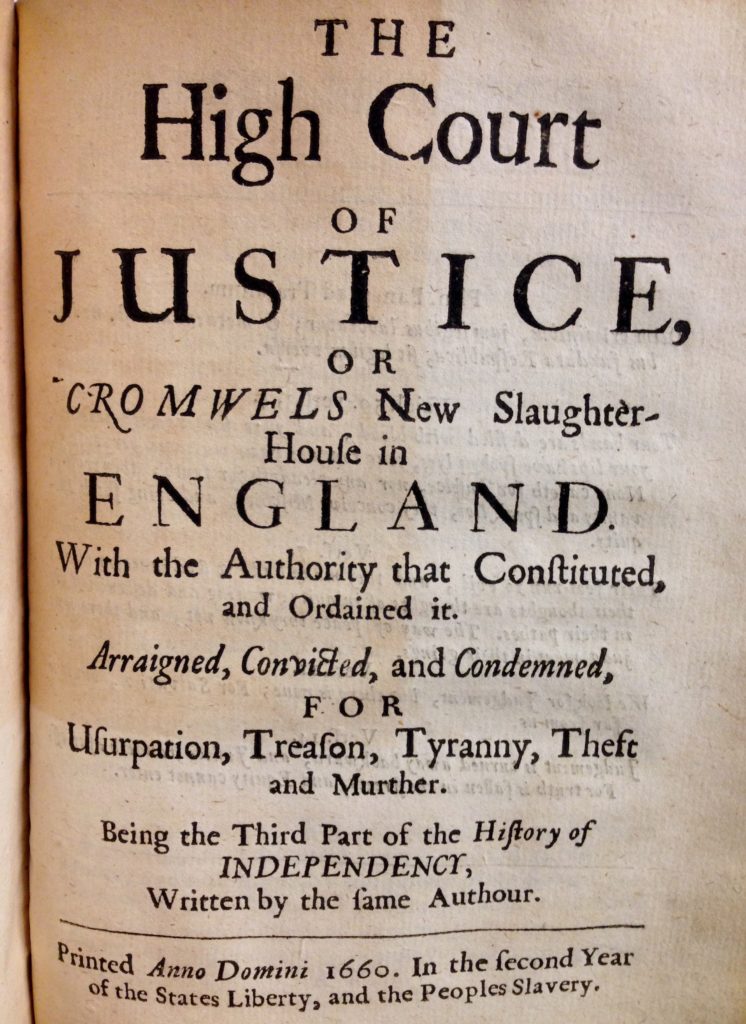
You never know what you’ll find while browsing the stacks at AAS. A few years back, when I had just started working at the Society, I stumbled across something unusual in the library basement: a pair of ornate swords, one from the early nineteenth century and the other from the seventeenth century. It was this second, older sword that really intrigued me. I soon learned it was carried by Fitz-John Winthrop, an early governor of Connecticut and the grandson of the famous John Winthrop—the influential Puritan leader of the Massachusetts Bay Colony. Recently, I looked deeper into the history of the sword and its owner and found a remarkable story, one that even involved one of my ancestors (much to my surprise). In fact, the life of Fitz-John Winthrop reveals a web of connected historical figures and their stories, which, taken as a whole, have a lot to say about the struggle for power that took place in the northeast during the late seventeenth century. Taking a closer look at these linked people and events, we can learn a lot about the Native American, French, and English forces that fought for control and survival during King William’s War.

The sword by itself, as an object, can tell us a great deal of Fitz-John Winthrop’s history. The sword has a Scottish Highland basket-hilt and bears the renowned “Andrea Ferrara” name on its blade. While the blade likely dates from the late sixteenth or early seventeenth century, the hilt was probably added in the early eighteenth century. The age of the blade makes it nearly certain that Winthrop carried the sword as a young man, while serving overseas in the English Civil War. And while the famed Ferrara blades were falling out of favor by the end of the seventeenth century, the early eighteenth-century addition of the hilt indicates that he may have continued to use the sword well past the turn of the century. For this reason, it is very possible that Winthrop was still carrying this sword when he led a failed expedition into Canada during King William’s War in 1690.
While largely forgotten by modern historians, Fitz-John Winthrop was involved in several key moments of seventeenth-century New England history and interacted with powerful figures who shaped the development of the English colonies. Born in Ipswich, Massachusetts in 1638, young Winthrop quickly showed himself to be more of a soldier than a scholar. At age sixteen, he was denied entry into Harvard and left America to fight in the English Civil War shortly thereafter. He served in George Monck’s army and was present in 1660 when Monck used his forces to support the restoration of Charles II. (In an 1888 AAS Proceedings article, it is speculated that his sword “may have been drawn from its scabbard to salute Charles the Second.”)[1] The fact that young Winthrop aided in the restoration of a Stuart monarch is not insignificant, as his later support for the Stuart-appointed New England government under Edmund Andros became a point of controversy.

After his service in the English military, Winthrop eventually returned to America, where he was involved in both the conflict with the Dutch in New York and then King Philip’s War. In 1686, he became a member of the council of the Dominion of New England—the Andros-led government that quickly proved unpopular with the region’s Puritans, who felt it was tainted by the Stuarts’ Catholic leanings. Despite backlash against this government, and despite Winthrop’s strong Puritan heritage, he maintained support for the Dominion and a friendship with Andros. Winthrop cautiously acknowledged the legitimacy of the 1689 revolt that overthrew Andros, but his prior support for the regime casts doubt on later depictions that portray him as a proto-Patriot and Puritan populist. (The 1888 Proceedings article even claims that he “rendered a great service in advance to the cause of the American Revolution.”)[2]

Regardless, Winthrop was not judged too harshly by the people of New England in 1689, and he was given a position in the new Connecticut government. He soon became involved with the growing King William’s War, which pitted the English settlers and their Iroquois allies against the Wabanaki Confederacy and the French. In 1690, New England authorities, in response to threats along the northern border, decided to organize two military expeditions into the heart of enemy territory in Canada. One of these expeditions was to attack Quebec by sea, and the other, led by Winthrop, was to strike at Montreal via Lake Champlain. Both were failures. French forces defeated the English at Quebec, and Winthrop never even made it to Montreal. Overwhelmed by disease and logistical issues, Winthrop was forced to call off the mission near the shores of Lake Champlain. Writing to the Connecticut governor and council, he declared the “designe against Canada poorely contrived & little prosecuted.”[3]
While the New England authorities ultimately agreed that Winthrop could not have succeeded given the circumstances, others were not so forgiving. On his trip back to Connecticut, Winthrop was briefly imprisoned by New York authorities for his conduct during the expedition; he had to be freed by some nearby Mohawk allies. One contemporary commentator declared that Winthrop and William Phips, leader of the Quebec mission, each deserved “a wooden sword” for their failures rather than the credit that New England authorities were granting them.[4] (If Fitz ever did receive this wooden sword, it failed to make its way to the AAS collections!) After the war, Winthrop would continue to serve the Connecticut government, until his death in 1707.
Check back in next week to read Part II, where we will learn more about some of the historical figures connected to Fitz-John Winthrop and King William’s War.
[1] AAS, April 1888 Proceedings, 155.
[2] AAS, April 1888 Proceedings, 154.
[3] Winthrop, “Letters of Fitz-John Winthrop,” 308.
[4] Quoted in Baker and Reid, The New England Knight, 239.

One thought on “The Story of a Sword: Fitz-John Winthrop and King William’s War, Part I”